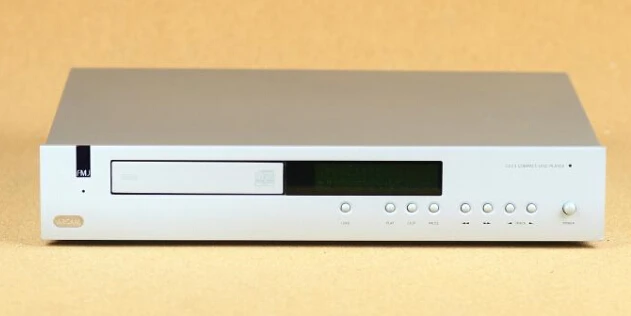It’s often argued that the 1960s didn’t begin until the middle of the decade, and that they didn’t end until the mid-1970s…
Perhaps you might say the same about the 1980s, because the Sony CDP-911, despite its 1993 release, is very much a product of that decade.
Even though it’s several generations removed from Sony’s initial CDP-101, it was the final gasp of the company’s first age of silver disc spinners.
Consider it a high-end Sony silver disc spinner from the late 1980s that has shrunk in the wash. It includes all of the features found on top-of-the-line Sonys from the 1980s, such as the CDP-557ES, but it’s squeezed into a clearly budget-friendly chassis that’s skillfully designed to look as costly as the company’s previous high-end devices.
If you took a cursory look at the CDP-911, you’d think it was a late-eighties Sony that cost a thousand pounds or more. However, as you come closer, you can see where the costs have been lowered…
This isn’t to imply it’s a low-quality computer; it was, after all, a bargain for $450 when it was new. When compared to the Marantz CD-52SE, it was excellent value; the latter was effectively a glorified entry-level machine, whereas this feels like a more humble high-ender.
It offers a sound for which you would have paid a lot more just a few years ago. It’s a Bitstream machine, which was popular at the time, although it sounds more animated than Philips machines. Sony calls the one-bit CXD2562Q DAC chip a “High Density Linear Convertor,” and it pairs with a smooth, reliable Sony KSS-240A mechanism that still has optical pick-ups.
The case, which measures 430x110x355mm, is constructed of pressed steel, while the fascia is built of an aluminium alloy with plastic buttons. The chassis is also steel, lacking the copper used in higher-end ES computers at the time. The power comes from a frame-type transformer, and the disc mechanism is primarily plastic, albeit it is individually sprung to prevent vibration.
One of the Sony’s few luxury touches is the disc drawer, which locks into a rubber gasket that seals off outside vibrations. In fact, the disc drawer performs better than many more expensive machines at the time and now.
Another example of Sony’s attention to detail is the sound deadening material used in the housing. The machine weights 4.8kg, which is roughly half the weight of normal ES machines of the time, yet it still has a ‘Made in Japan’ feel to it.
Sony has a policy of cramming a slew of capabilities into its low-cost machines, and the CDP-911 is no exception; just a few years ago, it would have appeared incredible for the money. A big, dimmable fluorescent dot-matrix alphanumeric display with a ‘music calendar’, as well as a slew of buttons on the fascia, provide easy access to up to twenty tracks and a variety of play settings.
A Custom File function allows you to configure the device with your favorite tunes for each CD you own, essentially creating your own playlist for each disc. There’s also a full-size gold-plated headphone connection with variable level control, which can be controlled via the remote control — this was a significant selling point for most buyers back in the day.
It has vibration-absorbing feet and gold-plated phono plugs on the back for fixed and variable outputs, as it is a ‘E’ suffix European model. As with all mid-priced Sony CD spinners of the time, a single optical digital output is included.
The Sony sounds about the same as it measures, which is quite nice but not extraordinary. It features a low total harmonic distortion of 0.0025 percent (1 kHz, 0dB), a signal-to-noise ratio of over 116dB, and a dynamic range of over 100dB, according to the manufacturer.
The channel separation is said to be 110dB. It’s very clear, crisp, and punchy on audition, with a lively and engaging sound, but it’s still a touch too ‘hi-fi’ for some tastes – with a little too much analysis and not enough feeling. The Bitstream DAC is less upfront in tone than older Sony devices.
In isolation, it’s difficult to envision a performer of this caliber sounding this fantastic – the only thing holding it back in absolute terms is a lack of musical acumen and rhythmic fluidity. All of the essentials are correct; it’s just that the CDP-911 airbrushes things just a smidgeon too much, failing to extract the last tenth of musical data from the disc.
Overall, this is a fantastic little machine, especially when you consider how terrible most of its price competitors were at the time. Because it lacks the stylish cachet of the vintage eighties Sonys that it’s meant to look like, it’s also cheap to buy now: A well-preserved one can be had for under $150. It produces a well-organized, tidy, and attractive sound that is far superior to what you may expect.
This Sony is also one of the most dependable of its kind, so keep an eye out for it secondhand. Prices are unlikely to climb significantly because there are so many of them, and it will never become as iconic as some of its stablemates.







